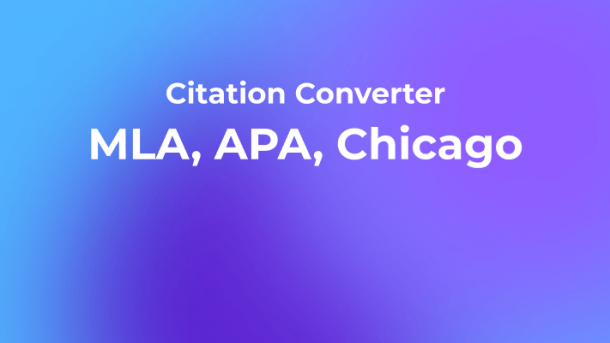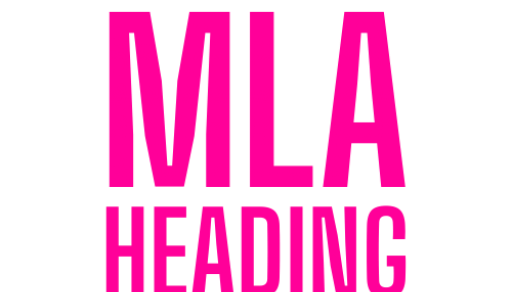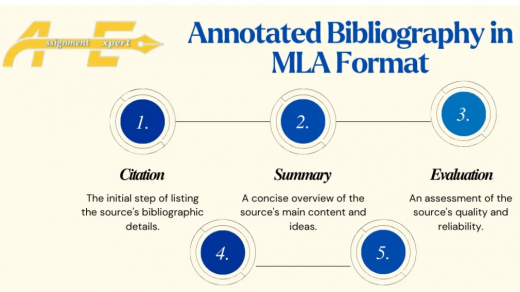Academic writing is governed by a set of stylistic conventions that dictate how sources are cited, formatted, and presented. Among the most widely used citation styles are APA (American Psychological Association), Chicago, and MLA (Modern Language Association). Each style serves a specific disciplinary purpose and has unique rules for in-text citations, footnotes or endnotes, bibliographies, and formatting.
The need to convert between these citation styles arises frequently for students, researchers, and writers who submit work to different publishers, academic institutions, or interdisciplinary journals. Understanding the nuances of each style and knowing how to translate citations accurately is essential for maintaining academic integrity, avoiding plagiarism, and ensuring clarity.
This essay explores the principles of APA, Chicago, and MLA citation styles, examines their differences and similarities, and provides a practical, step-by-step approach to converting between them. Additionally, the essay highlights common challenges and offers strategies to streamline the conversion process.
Overview of APA, Chicago, and MLA Styles
APA Style
APA style, commonly used in the social sciences, emphasizes clarity, conciseness, and systematic presentation of research. Key features include:
-
Author-date in-text citations: e.g., (Smith, 2020).
-
References page: Detailed bibliographic information listed alphabetically.
-
Emphasis on currency: Recent publications are often preferred, reflecting the dynamic nature of scientific research.
APA also dictates formatting conventions for headings, tables, figures, and the general layout of papers, promoting uniformity and readability.
Chicago Style
Chicago style, often employed in history, literature, and the arts, offers two systems:
-
Notes and Bibliography: Uses footnotes or endnotes for citations and a bibliography for reference.
-
Author-Date: Similar to APA, with in-text citations followed by a reference list.
Chicago style is flexible and allows for more detailed commentary in notes, making it suitable for disciplines that require extensive contextualization or explanatory notes.
MLA Style
MLA style, predominant in the humanities, emphasizes author-page in-text citations: e.g., (Smith 45). A Works Cited page provides complete bibliographic information. MLA focuses on clarity and brevity, prioritizing the author’s name and the page number over publication date.
Formatting in MLA includes double-spacing, 1-inch margins, and clear headings, fostering a readable and organized presentation of ideas.
Challenges in Converting Between Styles
Converting citations between APA, Chicago, and MLA is not simply a matter of reformatting punctuation or italicization. Writers must navigate differences in how each style handles several key elements:
In-Text Citations
APA emphasizes the year of publication, while MLA prioritizes page numbers, and Chicago often uses footnotes or endnotes. Converting requires rethinking how each reference is integrated into the text.
Reference Lists vs. Bibliographies
APA and MLA use alphabetically ordered reference lists, whereas Chicago Notes and Bibliography style often combines notes for immediate reference with a bibliography. Writers must ensure that entries are correctly formatted, ordered, and aligned with the target style’s rules.
Digital and Print Sources
Styles vary in how they present URLs, DOIs, and access dates. APA uses DOIs whenever possible, MLA provides URLs without “http://” in some cases, and Chicago may include both access dates and publication details.
Multiple Authors
Handling multiple authors differs across styles. APA uses an ampersand for two authors and “et al.” for three or more, MLA lists up to two authors with “and,” and Chicago has specific rules depending on the system employed.
Special Source Types
Books, journal articles, conference papers, websites, and multimedia sources each have unique formatting rules. Converting correctly requires familiarity with these details to ensure consistency and credibility.
Step-by-Step Conversion Process
Converting citations systematically can reduce errors and save time. The following steps provide a practical approach:
Step 1: Analyze the Original Citation
Identify the original style (APA, Chicago, or MLA) and break down the citation into its constituent elements:
-
Author(s)
-
Title of work
-
Publication date
-
Publisher or journal information
-
Page numbers (if applicable)
-
DOI or URL (for digital sources)
Understanding which elements are included in the original citation helps determine which need modification or repositioning in the target style.
Step 2: Understand Target Style Requirements
Refer to the official style manuals or authoritative guides:
-
APA: Publication Manual of the American Psychological Association, 7th Edition
-
Chicago: The Chicago Manual of Style, 17th Edition
-
MLA: MLA Handbook, 9th Edition
Pay attention to:
-
Punctuation and capitalization rules
-
Placement of publication information
-
Formatting of author names and multiple authors
-
Handling of digital identifiers
Step 3: Reformat Individual Components
Adjust each element according to the target style. Examples include:
-
Moving the publication year from parentheses after the author’s name (APA) to the end of the citation (MLA).
-
Changing in-text parenthetical citations to footnotes (Chicago Notes and Bibliography).
-
Altering capitalization of titles according to sentence case (APA) or headline case (MLA, Chicago).
Step 4: Verify Consistency
Ensure that all references in the text correspond with the bibliography or Works Cited/References page. Double-check:
-
Author names are spelled consistently.
-
Titles, journal names, and publication details match source material.
-
URLs and DOIs are active and properly formatted.
Consistency is crucial to prevent unintentional plagiarism or confusion for readers.
Step 5: Utilize Tools and Software
Several tools can assist in accurate conversions:
-
Citation Managers: Zotero, Mendeley, and EndNote can export bibliographies in multiple styles.
-
Online Citation Converters: Platforms like Citation Machine or BibMe provide automated formatting.
-
Word Processor Features: Microsoft Word and Google Docs offer reference and bibliography tools that support style conversion.
While these tools expedite the process, writers should manually verify each entry to ensure precision and adherence to nuanced style rules.
Table: Key Differences Among APA, Chicago, and MLA
| Element | APA (7th) | Chicago Notes & Bibliography | MLA (9th) |
|---|---|---|---|
| In-text citation | Author (year) | Superscript number linked to footnote/endnote | Author page |
| Bibliography/References | References list, alphabetical by author | Bibliography + footnotes | Works Cited, alphabetical |
| Authors | Up to 20 authors listed; ampersand before last | First author listed in bibliography; others vary | Two authors: “and”; more: “et al.” |
| Title capitalization | Sentence case (books/articles) | Title case | Title case |
| Page numbers | Optional in-text (for quotes: p. xx) | Included in footnotes | Required in in-text for quotes |
| URLs/DOIs | DOI preferred; URL optional | Access date optional; URL if online | URL optional; access date not required |
| Footnotes | Rare; APA uses parenthetical | Extensive notes allowed | Minimal; parenthetical only |
This table illustrates that successful conversion requires attention to multiple dimensions, including citation placement, punctuation, and formatting conventions.
Practical Examples of Conversion
Example 1: Journal Article
-
APA:
Smith, J. A., & Lee, R. T. (2020). The impact of digital learning tools on student engagement. Journal of Educational Research, 112(3), 45–59. https://doi.org/10.1080/edu.2020.112345 -
Chicago (Notes & Bibliography):
-
John A. Smith and Rachel T. Lee, “The Impact of Digital Learning Tools on Student Engagement,” Journal of Educational Research 112, no. 3 (2020): 45–59, https://doi.org/10.1080/edu.2020.112345.
-
MLA:
Smith, John A., and Rachel T. Lee. “The Impact of Digital Learning Tools on Student Engagement.” Journal of Educational Research, vol. 112, no. 3, 2020, pp. 45–59. https://doi.org/10.1080/edu.2020.112345.
Example 2: Edited Book
-
APA:
Brown, L. M. (Ed.). (2018). Perspectives on modern pedagogy. New York, NY: Academic Press. -
Chicago:
L. M. Brown, ed. Perspectives on Modern Pedagogy. New York: Academic Press, 2018. -
MLA:
Brown, L. M., editor. Perspectives on Modern Pedagogy. Academic Press, 2018.
These examples demonstrate that while the content remains the same, the presentation, punctuation, and placement of elements vary significantly across styles.
Tips for Efficient Style Conversion
-
Create a Personal Conversion Cheat Sheet – Summarize the main rules for APA, Chicago, and MLA in a single document.
-
Batch Convert Sources – Group similar types of references (e.g., journal articles, books, websites) for systematic conversion.
-
Check Publisher Requirements – Always verify whether a journal or professor specifies a particular style edition.
-
Use Manual Verification – Automated tools are helpful, but careful manual review ensures compliance with nuanced rules.
-
Keep Organized Records – Maintain a library of citations in a single reference manager to facilitate future conversions.
By integrating these practices, students and researchers can minimize errors, maintain consistency, and save time during manuscript preparation or academic submissions.
Conclusion
Converting between APA, Chicago, and MLA styles is an essential skill for academic writers who navigate diverse disciplinary standards, publishers, or institutional requirements. While the three citation styles share the fundamental goal of giving credit to sources, they differ in structure, formatting, and emphasis.
Understanding these differences and following a systematic, step-by-step approach can make conversion straightforward and reduce the risk of errors or plagiarism. Strategies such as breaking down citations into components, applying target style rules, using technological tools wisely, and manually verifying outputs are key to success.
Ultimately, mastering the art of citation conversion enhances not only technical proficiency but also scholarly credibility. Writers who can seamlessly adapt their work to different stylistic contexts demonstrate versatility, attention to detail, and respect for academic conventions. By combining structured methods, digital resources, and careful review, students and researchers can confidently navigate the challenges of citation conversion while maintaining the integrity and clarity of their work.




